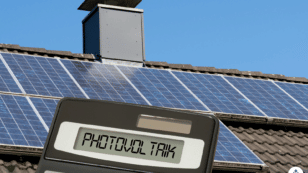
Is Solar Worth It in Wyoming? (2024 Homeowner's Guide)
Here’s a quick overview of solar viability in Wyoming:
- Wyoming ranks 44th in the country for solar installations.*
- The average electricity rate is 12.41 cents per kWh**
- The average solar payback period is 14 years.***
- Homeowners are eligible for statewide net metering and the federal tax credit
- The average homeowner saves $18,070 over the lifetime of their solar system***
*According to the Solar Energy Industries Association.1
**Data from the Energy Information Administration.2
***Calculated assuming the system is purchased in cash.
Each product and or company featured here has been independently selected by the writer. You can learn more about our review methodology here. If you make a purchase using the links included, we may earn commission.
Overall, Wyoming is far from the most solar-friendly state, ranking 44th out of all 50 states for incentive programs and solar adoption. However, that doesn’t mean that it’s not worth it to go solar in the area. In fact, most solar customers in the state see electric bill savings from their panels that pay off the systems in just 14 years and then save an additional $18,070, on average, after that point.
The state receives more sunny days than most states, homeowners enjoy a lower price for solar equipment than the national average, and there are some incentives afforded to Wyomingites that make solar energy more appealing. Below, you’ll find an in-depth analysis of whether or not it’s worth it to go solar in Wyoming. For most homeowners, converting to solar power not only reduces their carbon footprint but also makes good financial sense in the long run.
To speak with an EcoWatch-vetted professional who can help you determine whether solar is worth it for your Wyoming home, follow the links below.

Creative Energies Solar
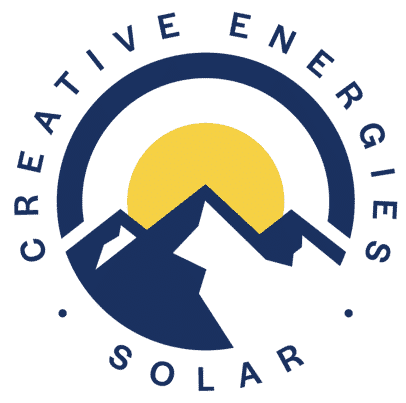
Regional Service
Average cost
Pros
- Certified B Corp
- Outstanding customer service
- Many years of experience
- Multitude of products and services
Cons
- No leases or PPAs
- Slightly expensive

Apollo Energy

Regional Service
Average cost
Pros
- Women-owned
- Bilingual service associates
- Certified B Corp
- NABCEP-certified technicians
- Makes charitable contributions
Cons
- Relatively young company
- No leases or PPAs

The Solar Guys
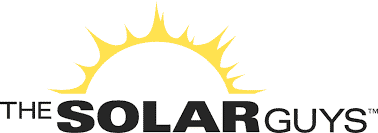
Regional Service
Average cost
Pros
- Comprehensive service offerings
- Locally owned and operated
- Outstanding customer service
Cons
- Limited service area
- Limited information available on website
- Relatively young company
Watch Below: Learn How You Can Profit Off Of the Extra Energy Your Solar Panels Produce
How To Figure Out if Solar Panels are Worth It in Wyoming
We can tell you upfront that going solar is worth it for most Wyoming residents, saving homeowners an average of $18,070 over the lifetime of the system. However, this isn’t the case for every home, so it’s important to be able to figure out if going solar is worth it for you. Below are the things you need to consider before committing to a solar conversion for your home.
What’s Your Home Electricity Consumption?
One of the most crucial things to consider when deciding if solar is worth it for your home in Wyoming is your average monthly energy bills. You can check your past electric bills for consumption data, typically for the past six months or for the previous year. For solar panels to be worth it, you’ll want to confirm that your energy consumption is at least 500 kWh per month, averaged out for the year. While not foolproof, that’s a decent benchmark for solar viability.
Most Wyoming homes use an average of 869 kWh per month, which is well in excess of the minimum for solar conversion to be worth the upfront fee. As such, solar is going to be financially beneficial and worthwhile for most homeowners in Wyoming.
How Much Is It To Go Solar in Wyoming?
Solar panel systems are typically priced based on a per-watt basis, with an average watt price of $3.29. This is below the national average of $3.33, meaning your money goes a bit further for panels in Wyoming than it would in most other states. Most Wyoming residents require a system that is at least 9 kilowatts (kw) to offset energy needs, which comes out to an average price for solar panels in Wyoming of $29,610 before incentives or $20,727 after the federal solar tax credit is considered.
Generally speaking, solar becomes more valuable the higher your energy rates and consumption are and the lower your solar project installation prices are. Wyoming homeowners enjoy relatively affordable energy — an average cost of 12.41 cents per kWh, which is well below the national average of 16.79 cents — and they use slightly less energy — 869 kWh per month as opposed to 881 kWh in the rest of the country — which decreases the value of solar. However, solar panels are also priced lower than in most states, which means solar has about an average value in Wyoming.
And keep in mind that the “average” cost for panels still pays for itself and nets over $18,000 in savings over time, on average.
What’s the Payback Period for Solar in Wyoming?
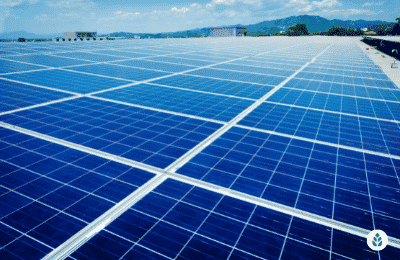
Most Wyoming residents — barring those who use a solar lease or power purchase agreement (PPA) — will find that their panels pay for themselves in around 14 years, or between 10 and 16 years on average. For comparison, the average payback period in the U.S. is around 11 years, and most homeowners have timelines between 9 and 15 years. If your estimated payback period is longer than the 16-year high-end in the state — based on a solar calculator or an installer’s estimate — your total return on investment won’t be as high over time, meaning solar might not be worth it for you, depending on your financial situation.
What Are Average Buy-Back Rates in Wyoming?
Most states have a mandated net metering program, which dictates how homeowners are compensated for energy their panels produce above and beyond what they consume. The excess energy gets routed to your utility provider through your inverter if you’ve elected to set up interconnection, and you get compensated in cash or via energy credits. For homeowners without the possibility for net metering, the average return on investment (ROI) won’t be nearly as high as it would with a beneficial net metering policy.
Net metering is mandated for all investor-owned utilities and electric cooperatives in Wyoming. All credits you accrue will be credited at the utility’s “avoided use” rate, which is basically a wholesale rate that is lower than the retail price of electricity. The credits are used to reduce your energy bills for additional power you need to import, and your power company will buy any excess energy credits back from you at the beginning of the following calendar year. Credits are also purchased at the same below-retail rate.
The avoided-cost rate is better than nothing, but it’s not as good as some states that mandate the full retail value. In areas like Wyoming, a lot of customers opt for solar batteries, which not only provide the ability to maintain electricity through power outages, but they also offer effective net metering at the retail rate. They cost between $10,000 and $20,000 to install, but they can sometimes push savings even higher in states like Wyoming.
We should mention that California recently rolled out NEM 3.0, which cut the credit rate by about 75%. And, unfortunately, that trend is likely to continue in other states over the coming years. We expect at some point in the future that NEM will be discontinued in Wyoming, which would make batteries more of a necessity. That would drive up installation costs, but it would also restore some of the savings lost by a less-than-ideal net metering rate.
How Much Sun Does Your Roof Receive?
Of course, solar panels are only worth it if they produce energy, and they’ll only produce energy when they’re exposed to sunlight. States with abundant sunlight are best, but if your individual roof is obstructed by trees, buildings or anything else, solar will inevitably give you a smaller return on investment over time. Wyoming receives an average of 233 sunny days per year, which is above the national average of 205. This means, in general, solar is a better investment in Wyoming than in other states based on sunlight availability. Within the state, the direction of your roof plays a role in how valuable your panels will be. Homeowners with west-facing and south-facing roofs will get the most direct sunlight and see the highest return on investment, on average.
What’s the Climate for Solar in Wyoming?
Climate and weather also have an impact on how valuable solar is in a particular area. In most areas of Wyoming, the weather is relatively moderate, so most homeowners don’t need to worry too much about their photovoltaic (PV) systems being damaged by falling tree limbs, blowing debris or natural disasters. Parts of the state are prone to tornadoes and intense thunderstorms, so residents in those areas might need specific warranties, but the weather overall isn’t a major consideration.
As far as the general consensus on solar adoption goes, most homeowners agree that solar is worth the investment, but wind power is still very much the preferred renewable energy source throughout the state. Residential solar conversions have grown in popularity steadily over the past decade, but it will still likely be some time before individual home solar power systems are more popular than utility-scale solar and wind power. And if net metering dips or gets discontinued, we’d expect the industry to take a hit for a while, as well.
Benefits of Solar Energy in Wyoming
While going solar in Wyoming is pricy, the homeowners who make the conversion will enjoy several benefits. These include reduced energy bills, a bump in home value, some solar incentives and tax credits and more. We’ll discuss each of these upsides to going solar below.
Electricity Bill Savings
The average homeowner in Wyoming spends $107.84 on electricity every month. Since your solar array can eliminate your electric bill for 20 to 25 years, that means you could see net savings of $18,070 over the lifespan of your panels. Electricity rates continue to rise across the country, but when you install solar panels, you’re more likely to freeze your electricity rates. As such, your actual savings could be even higher in the long run.
Many Wyoming residents eliminate their energy bills with their solar arrays, which means they pay nothing for electricity every month, and those savings can go toward paying back the upfront fees of installing solar panels. The typical timeframe for offsetting the cash purchase price of panels in WY is around 14 years. For the expected panel life of 11+ years thereafter, the reduction in your energy bills will simply be money saved.
Keep in mind that batteries might be necessary for you to eliminate your electric bill. Installing batteries raises your installation costs by between $10,000 and $20,000 in most cases, which would also cut into your savings. The savings calculation can quickly get complicated, so make sure you speak to a reliable solar installer in Wyoming to get an accurate estimate for your home.
Lower Taxes & Access to Other Incentives
Solar incentives can make going solar far more appealing. Most notable in Wyoming is the federal solar investment tax credit (ITC). This credit gets applied to your federal income tax liability for the year you install your panels, and it’s for 30% of your total system expense. In Wyoming, the average ITC is $8,883.
Unfortunately, the state doesn’t have any Renewable Portfolio Standard (RPS) goals, so there are few other solar incentives available in Wyoming. You can, however, qualify for other local rebates for energy-efficiency upgrades, and you’ll have access to the statewide net metering program, as explained above.
Home Resale Value Increase
One of the most significant benefits of going solar is the bump in home value you’ll enjoy. Solar panels increase your property value by an average of 4.1%, according to data from Zillow. In Wyoming, where the average home value is $331,482, that’s a typical increase of $13,590! It’s important to note that this value bump is only expected if you use a cash purchase or solar financing to acquire your panels. Leases and PPAs will not cause your home value to go up. Installing batteries, on the other hand, could increase that value bump even more.
Clean, Renewable Energy
For homeowners looking to reduce their carbon footprint, going solar provides far more benefits than just financial incentives. Converting to solar means using renewable energy to power your home — and possibly your vehicle — which reduces your dependence on your utility company and allows you to tap into clean energy sources rather than more harmful fossil fuels. Your home will be more independent, and it will have less of a negative impact on the environment.
What to Look Out For When Considering Solar in Wyoming
Going solar will be worth it for most Wyoming homeowners, but that doesn’t mean you should just jump in and hire the first solar installer you come across. Below is a list of things to consider before pulling the trigger and converting to clean energy.
Upfront Fees
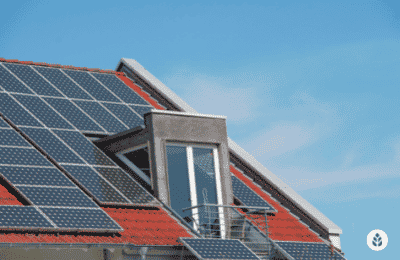
Payback Period
Most Wyoming solar customers find that their systems pay for themselves within 10 to 16 years, or around 14 years, on average. If your estimated payback period after all expenses and incentives are considered is more than 16 years, solar will likely still be worth it, but you should understand that it will take longer to see a return on your investment.
Net Metering Policies in Wyoming
Net metering programs vary between states, municipalities and utility companies, so you should check your local policy before converting to solar. The net metering policy in your area won’t be the tipping point for solar not being worth it, but it can help you decide if the payback period is sufficient for your needs and expectations. If you don’t have access to net metering, you can install a solar battery instead to offset electric bills further.
We’ll mention again that net metering is on the decline in the U.S., so we expect that the future will bring a dropped credit rate or even a discontinuation of the policy altogether in Wyoming. That means going solar now and locking in the current net metering rate is your best bet for maximizing savings.
Pending Policies & Changes to Incentives
Overall, solar energy is becoming more and more prevalent and valuable throughout the country, which means policies and incentives can change routinely. Plus, the industry is changing and improving constantly, so prices for equipment could go down in the future. We recommend checking for updated policies and pricing before committing, although it’s generally not worth it to forego savings now to wait for better incentives to come along.
Weather & Climate in Wyoming
As you can probably guess, solar panels work best and provide the highest returns in areas where there is abundant and direct sunlight, which is usually closest to the equator. However, northern states like Wyoming that receive above-average sunny days can still be a valuable place to install solar panels. Many homeowners in the area wonder if the long, cold winters make solar conversions less appealing. Electricity flows more quickly in the cold, so although you’ll be receiving less direct sunlight than in the summer, you can still see high panel efficiency in the winter. Similarly, panels will work on cloudy days and when it’s snowing, although cloud and snow obstruction will also reduce efficiency. The high amount of annual snowfall in the winter in Wyoming will reduce overall energy production, but it will naturally clean dirt and debris off of your panels to maximize efficiency once the snow melts.
Companies Pushing Solar Leases or PPAs
Many homeowners looking to go solar will undoubtedly be enticed by the offer of “free solar panels.” Unfortunately, “free solar panels” are never actually free. What these companies are really offering is a lease or power purchase agreement (PPA) with no money down. Solar leases don’t increase your property value, they won’t give you access to the federal solar tax credit and they typically take far longer to pay off, if they ever do. As such, they’re not advisable over a purchase or solar loan.
While claiming solar leases are “free panels” is bad, some companies in Wyoming have even sketchier business practices. Black Hills Energy, for example, had to warn Cheyenne customers of companies that were claiming to be affiliated with local utilities that couldn’t provide what they were promising. Rocky Mountain Power also had to make a statement about scam solar companies that were claiming to be affiliated with local utilities that actually weren’t.
The bottom line is that you need to be careful which solar panel company you hire and make sure that they are reputable and reliable before signing anything. The best solar companies might offer leases but certainly won’t push them.
Wrap Up: Is Solar Worth it in Wyoming?
While going solar in Wyoming is quite expensive, most homeowners throughout the state find that installing solar is a worthwhile investment. With that being said, it’s not right for everyone, and the value of your system and the expected payoff and ROI will depend on your property and many other factors. Before deciding to go solar, you should consider your energy needs, your electricity rate, the price of solar panels, what size solar system you’d need to cover your electric bills, the net metering policy offered by your electricity provider, shading on your property and more. We strongly recommend getting in touch with a reputable and vetted solar provider that services your city to help decide and calculate if going solar is right for your home and your financial situation.
See also: Find out how much solar power your roof can produce with our solar calculator
Read More About Going Solar
- What Are the Best Solar Companies in Wyoming?
- What Solar Incentives Are There in Wyoming?
- Find Cost Savings on Solar in Wyoming
The cost information presented in this article is derived from a comprehensive analysis, incorporating data from multiple industry sources. The average cost per watt per state was calculated based on figures from Consumer Affairs, Energy Sage, and Berkeley Lab’s Electricity Markets & Policy Department. Additionally, monthly energy consumption and the average monthly cost of electricity were sourced from the U.S. Energy Information Administration, ensuring a well-rounded and accurate representation of the information presented.
Frequently Asked Questions
The EcoWatch team gets questions from Wyoming residents about the prospect of going solar and how to decide if it’s the right choice. Below are some of the things we get asked most often. If you have specific questions that aren’t answered here, reach out to our team of solar experts at solar@ecowatch.com.
The answer to this question depends on many factors, including your monthly energy needs, the electricity rates in your city, how much sunlight your property gets, and much more. The only way to get an accurate estimate for your solar panel payback timeline is to have a reputable solar installer come to assess your home and calculate your estimated savings. With that being said, most Wyomingites find that their systems pay for themselves in between 10 and 16 years, with the average hovering around 14 years.
In most cases, yes! The average savings Wyoming homeowners enjoy over the lifetime of their solar panel system is $18,070. This assumes a cash purchase, adequate sunlight on the property, average energy needs, and average home and system size.
Yes! According to estimates from Zillow, the average home will jump in value by approximately 4.1% after solar panel installation. With the average home in Wyoming being worth $335,160, that’s a typical bump in the value of around $13,741. Keep in mind that your home value is only expected to increase if you purchase or finance your solar panels.
Yes, permits are required to install solar panels in Wyoming. Permitting ensures that your system is connected properly and safely and that the weight of the rooftop solar panels can be supported by your home without structural issues. Provided you hire a reputable solar installer in your area, the company completing the work will typically file for permits for you.
DIY solar panel installation is possible in Wyoming, but it’s not recommended. The process of installing solar is complicated and inherently dangerous, so it’s best to leave the work to trusted and insured professionals.
Comparing authorized solar partners
-
- Certified B Corp
- Outstanding customer service
- Many years of experience
- Multitude of products and services
- No leases or PPAs
- Slightly expensive
Not RatedSolar Veteran
Having trouble deciding? Click below and use our process to receive multiple quotes instead:

 233k
233k  41k
41k  Subscribe
Subscribe 




